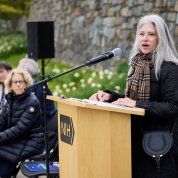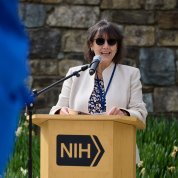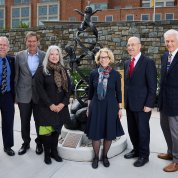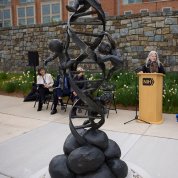New Statue Erected at NIH on National DNA Day
NIH welcomed a new sculpture on its Bethesda campus. Titled, “The Ladder,” the statue celebrates DNA and children. It was dedicated at a ceremony on Apr. 25, National DNA Day.

Photo: ERNESTO DEL AGUILA/NHGRI
The statue and dedication were hosted through a collaboration involving the Clinical Center, the Eunice Kennedy Shriver National Institute of Child Health and Human Development (NICHD) and the National Human Genome Research Institute (NHGRI).
“The Ladder” creator Mary Ellen Scherl said she took inspiration from biblical imagery and modern science, drawing parallels between a ladder leading to heaven in the Old Testament book of Genesis and the structure of DNA. The bend in the path of the ladder is translated into the familiar double-helix.
“I want people to walk away with a sense of joy and celebration of humanity and science, of their inclusiveness,” Scherl said.
The four messengers “ascending and descending” the sculpture take the form of children, representing the four nucleic acids that encode our genetic information and the diversity of humanity, according to Scherl.
“The Ladder” embraces a personal subject for the artist. Adopted at infancy, Scherl reconnected with her birth family with the help of modern genetics.
Using a commercial genetic test, she embarked on a years-long search for her relatives. One of those relatives, her half-brother Dr. John Constantino, an NIH grantee, spoke at the statue dedication.
The artwork is one of many that Scherl has created to engage with social issues. She was inspired to work on projects with public impact after seeing the profound effect her project “Mamorial,” a breast cancer initiative that invites breast cancer survivors to make a mold of their affected chests, had on survivors. Scherl has since created works that address diverse topics, including body image, genetics and women in military service.
Scherl’s work is exhibited at Vanderbilt University; the Contemporary Museum of Sculpture in Datong, China; the New York University Langone Medical Centers; and the Miami Military Museum.
In addition to Scherl and Constantino, featured speakers at the Apr. 25 dedication included Dr. Monica Bertagnolli, NIH director; Dr. Diana Bianchi, NICHD director; Dr. James Gilman, Clinical Center CEO; Dr. Eric Green, NHGRI director; and Frank Piatkowski of the Office of Research Facilities.
National DNA Day commemorates the completion of the Human Genome Project in 2003 and the discovery of DNA’s double-helical structure in 1953.
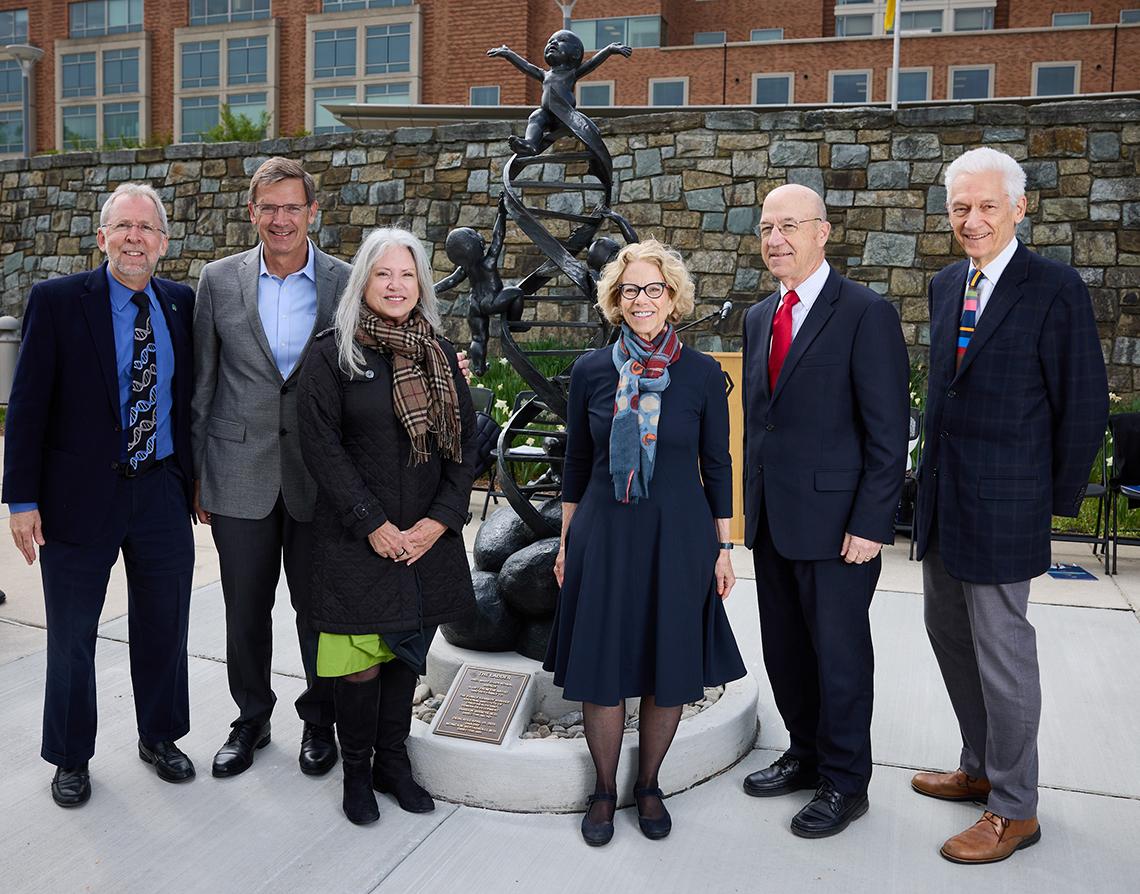
Photo: ERNESTO DEL AGUILA/NHGRI

